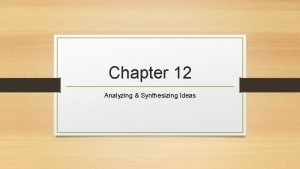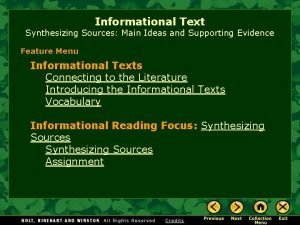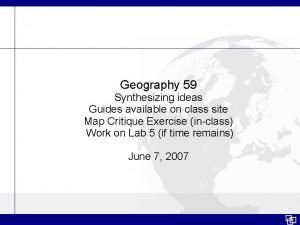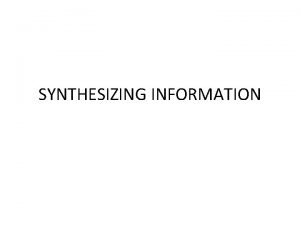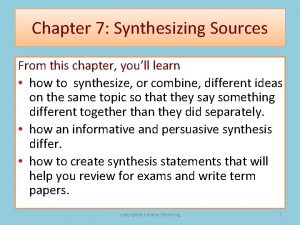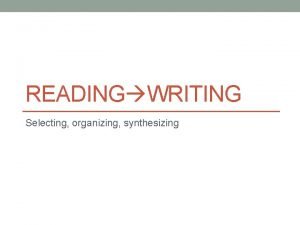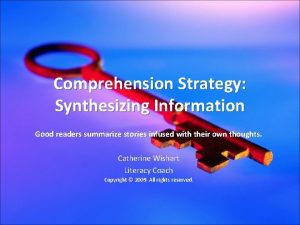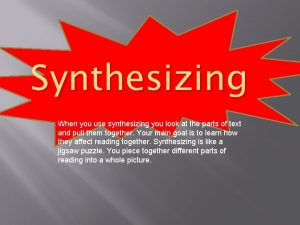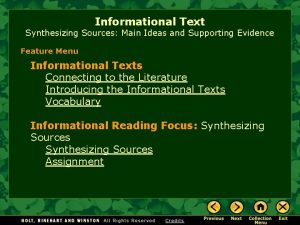Chapter 12 Analyzing Synthesizing Ideas Synthesizing Ideas To









- Slides: 9

Chapter 12 Analyzing & Synthesizing Ideas

Synthesizing Ideas • To explore connections and contradictions among groups of texts and to work your way to your own perspective through a series of essential thinking and writing moves. • • Formulate a synthesis question Summarize your texts Analyze similarities and differences Arrive at your own perspective on your synthesis question

Analysis and Synthesis • When you analyze something you break it down. When you synthesize something, you take it one more step, putting parts together in a new fashion. • Read excerpts on page 285. • In groups of 2 -3, answer questions 1 -4 on page 286.

To Synthesize • Carve out your own thinking on a question while sifting through the writings of others • Sort through ideas from different texts and sources and creatively forge a whole new idea or way of looking at the subject • A synthesis question helps you focus in on a problem that the texts address or that you are trying to solve through exploring the text(s)

Features of a Synthesis Essay • Presents a question as problematic and/or significant • Provides a short summary of texts • Provides a thesis that indicates how you have analyzed and synthesized the text to arrive at a new perspective: question, followed by an “although” statement • Provides your analysis • Provides your new view

Basic Structure • Introduction • • • Hook • Brief background of texts • Question • Thesis that includes your “although” statement Summary of texts Analysis-discuss and develop your analytical points (current viewpoints and opinions) Synthesis-discuss and develop your synthesis points (new idea supporting your thesis) Conclusion

How to Analyze • Analyzing means to examine a text’s parts and features, explaining what it says and how it says it • Involves your own pondering, questioning, weighing, and wrestling with ideas in the texts • Examine rhetorical features: purpose, audience, genre, angle of vision, use of evidence, etc. • Refer to questions on page 292 for ideas on how to analyze rhetorically

Analyzing cont. • Identify main issues, ideas, or themes in each text • Look for similarities and differences among your texts • Refer to questions on page 295 on how to explore similarities and differences

How to Synthesize • A well written synthesis essay incorporates ideas from your texts and also represents your own independent creative thinking, and showing evidence of the dialectic process • Think about how the differencing perspectives in your texts led you to new realizations and opinions • Which text influenced you more? Which text related most to your question? • Refer to questions on page 297 for ideas on developing your own views
